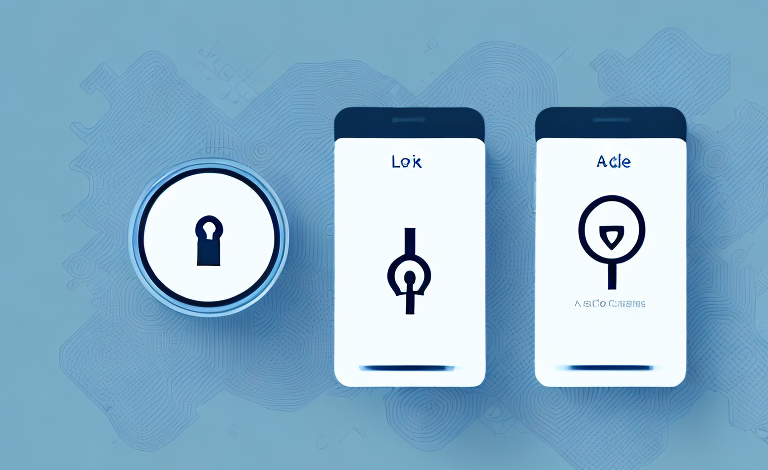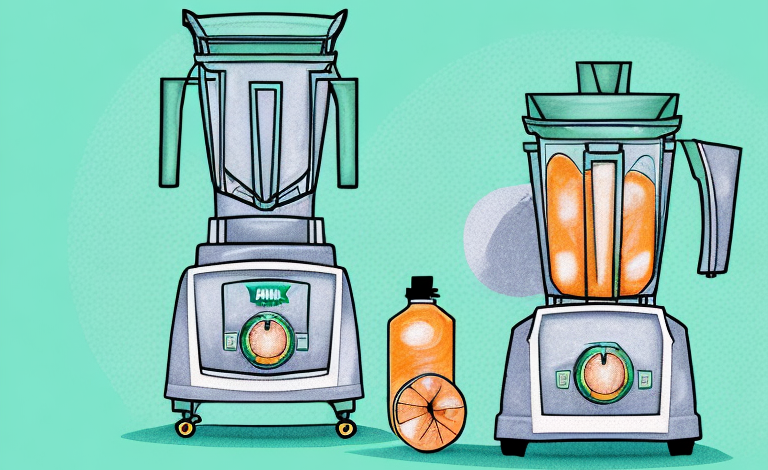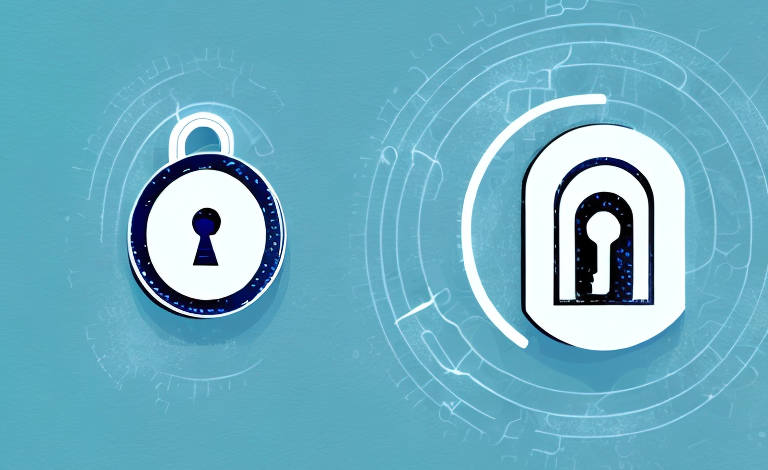When it comes to securing your home, one question that often comes up is whether a smart lock is safer than a regular lock. While both types of locks have their benefits and drawbacks, it is important to understand how they work and the potential risks associated with them before making a decision on which one to choose.
How smart locks work
A smart lock is an electronic lock that can be controlled using a smartphone, voice commands, or a keypad. They connect to your home’s Wi-Fi network to allow you to remotely lock and unlock your door, and even grant temporary access to guests or service providers. Some models also come with additional features such as motion sensors and cameras.
Smart locks use a variety of technologies to ensure the security of your home. Some models use Bluetooth to communicate with your smartphone, while others use Wi-Fi or Z-Wave. Many smart locks also have backup power sources, such as batteries or a mechanical key, in case of a power outage or other technical issues.
One of the biggest advantages of smart locks is the ability to monitor and control access to your home remotely. You can receive notifications when someone enters or leaves your home, and you can even set up schedules to automatically lock and unlock your door at certain times of the day. This can provide peace of mind and added security for homeowners, especially those who frequently travel or have rental properties.
How regular locks work
A regular lock, on the other hand, is a mechanical lock that uses a key to open and close the door. They come in various types such as knob locks, deadbolts, and mortise locks. While they are less sophisticated than smart locks, they still provide effective security against intruders.
Regular locks operate by using a series of pins that align with the grooves on the key. When the correct key is inserted, the pins align and allow the lock to turn, unlocking the door. The number of pins and grooves on the key can vary depending on the level of security needed. While regular locks may not have the advanced features of smart locks, they are still a reliable and affordable option for securing your home or business.
Benefits of using a smart lock
One of the main benefits of using a smart lock is convenience. You no longer have to worry about carrying around a key or hiding a spare under a rock. Smart locks also provide better access control, allowing you to grant temporary access to guests or service providers without having to be present. Additionally, some models come with the added benefits of motion sensors and cameras that can provide added security to your home.
Another benefit of using a smart lock is the ability to monitor and control access to your home remotely. With a smart lock, you can lock or unlock your door from anywhere using your smartphone or other internet-connected device. This can be especially useful if you need to let someone into your home while you’re away or if you forget to lock your door before leaving. Some smart locks also allow you to receive notifications when someone enters or exits your home, giving you added peace of mind and security.
Benefits of using a regular lock
While regular locks may not have the convenience of a smart lock, they are simple and reliable. They do not rely on electricity or Wi-Fi to operate, meaning they are less susceptible to hacking or power outages. They also do not require any additional equipment or installation, making them a more affordable option than smart locks.
Another benefit of using a regular lock is that they are often easier to use for those who are not tech-savvy. Smart locks can have a steep learning curve and may require additional setup and troubleshooting. Regular locks, on the other hand, are straightforward and easy to understand.
Regular locks also come in a variety of styles and designs, allowing you to choose one that matches the aesthetic of your home or business. From traditional deadbolts to modern keypad locks, there is a regular lock option for every preference and need.
Potential risks of using a smart lock
One potential risk of using a smart lock is the possibility of being hacked. If a hacker gains access to your Wi-Fi network or your smartphone, they may be able to control your smart lock and gain entry into your home. Additionally, some models may have vulnerabilities that can be exploited by hackers or malfunction due to software bugs.
Another potential risk of using a smart lock is the reliance on technology. If the smart lock malfunctions or the battery dies, you may not be able to enter your home. This can be especially problematic if you don’t have a backup key or if you’re away from home and unable to access the lock remotely. It’s important to consider these potential risks before deciding whether a smart lock is the right choice for your home security needs.
Potential risks of using a regular lock
The main risk associated with using a regular lock is that keys can be easily lost or stolen. This not only poses a security risk but can also result in costly lock replacements if the key falls into the wrong hands. Additionally, regular locks may be more vulnerable to picking or bumping by intruders.
Another potential risk of using a regular lock is that it can be time-consuming to unlock and lock, especially if you have multiple locks on your doors. This can be inconvenient in emergency situations where you need to quickly exit your home. Furthermore, regular locks may not provide enough security for high-risk areas such as safes or gun cabinets. In these cases, it is recommended to use specialized locks that offer higher levels of security.
Smart lock vs regular lock: Pros and Cons
When comparing smart locks and regular locks, it is important to consider their pros and cons. Smart locks offer convenience, access control, advanced security features, and the ability to integrate with other smart home devices. However, they may be susceptible to hacking and software bugs. Regular locks, on the other hand, offer simplicity, reliability, and affordability. However, they may be vulnerable to picking and may require keys to be changed if they are lost or stolen.
Smart lock technology advancements
Smart lock technology is constantly evolving, with new models offering enhanced features and improved security. Some of the latest advancements in smart lock technology include biometric authentication, facial recognition, and voice recognition. Additionally, some smart locks now come with additional sensors that can detect when a door is open or closed, providing added security to your home.
Regular lock technology advancements
While regular lock technology may not be as advanced as smart locks, there have been some recent advancements that have improved their security. One of these advancements is high-security locks that are more resistant to picking and bumping. Additionally, some regular locks now come with smart features such as keyless entry pads.
How to install and set up a smart lock
The installation and set-up of a smart lock will vary depending on the model, but generally, they require some basic tools such as a screwdriver and a drill. The first step is to remove the existing lock and install the smart lock according to the manufacturer’s instructions. Once installed, you will need to connect the lock to your home’s Wi-Fi network and download the relevant app onto your smartphone. From there, you can control the lock and set up any additional features.
How to install and set up a regular lock
The installation of a regular lock is relatively simple and can be done with just a screwdriver. The first step is to remove the existing lock and install the regular lock according to the manufacturer’s instructions. Once installed, you will need to ensure that the key fits and that the lock is functioning correctly.
Maintenance tips for smart locks
To ensure that your smart lock is functioning correctly, it is important to keep it maintained. This includes checking the batteries regularly and replacing them when needed, cleaning the sensors and cameras, and ensuring that the lock is securely attached to the door. Additionally, it’s important to keep your smartphone and Wi-Fi network secure to prevent any potential hacking attempts.
Maintenance tips for regular locks
Regular locks also require some maintenance to ensure they are functioning correctly. This includes lubricating the lock mechanism, checking the screws for tightness, and making sure that the key fits correctly. It is also recommended to have the locks rekeyed periodically to ensure that only authorized individuals have access to your home.
Smart locks and home security systems
Smart locks can be integrated with home security systems to provide added security to your home. This includes features such as remote monitoring and alerts, allowing you to know when someone has entered or exited your home. Additionally, some smart locks can work in conjunction with cameras and other smart home devices to provide a comprehensive security solution for your home.
Regular locks and home security systems
In combination with home security systems, regular locks can also provide effective security to your home. However, they may require additional equipment such as keypads or sensors to provide the same level of security as a smart lock. Additionally, regular locks may need to be changed or rekeyed periodically to ensure that only authorized individuals have access to your home.
Cost comparison between smart locks and regular locks
When it comes to cost, smart locks are generally more expensive than regular locks. The price of a smart lock can range from $100 to upwards of $500, while a regular lock can be purchased for under $50. Additionally, smart locks may require additional equipment or installation costs, while regular locks do not.
Consumer reviews: Smart locks vs regular locks
Consumer reviews of smart locks and regular locks are mixed. While some people find smart locks to be more convenient and secure, others prefer the simplicity and reliability of a regular lock. Reviews of both types of locks emphasize the need for proper installation and use to ensure maximum security.
Best brands for smart locks and their features
Some of the best brands for smart locks include August, Schlage, and Kwikset. These brands offer a range of features including access control, integration with other smart home devices, and enhanced security features such as cameras and motion sensors.
Best brands for regular locks and their features
Some of the best brands for regular locks include Kwikset, Schlage, and Yale. These brands offer a variety of lock types including knob locks and deadbolts, as well as additional features such as keypad entry and high-security options.
Conclusion
So, is a smart lock safer than a regular lock? The answer is not straightforward as both types of locks have their benefits and drawbacks. When making a decision, it is important to understand how they work, the potential risks associated with them, and your own personal security needs. Whether you choose a smart lock or a regular lock, proper installation and maintenance are essential to ensure that your home remains secure.



